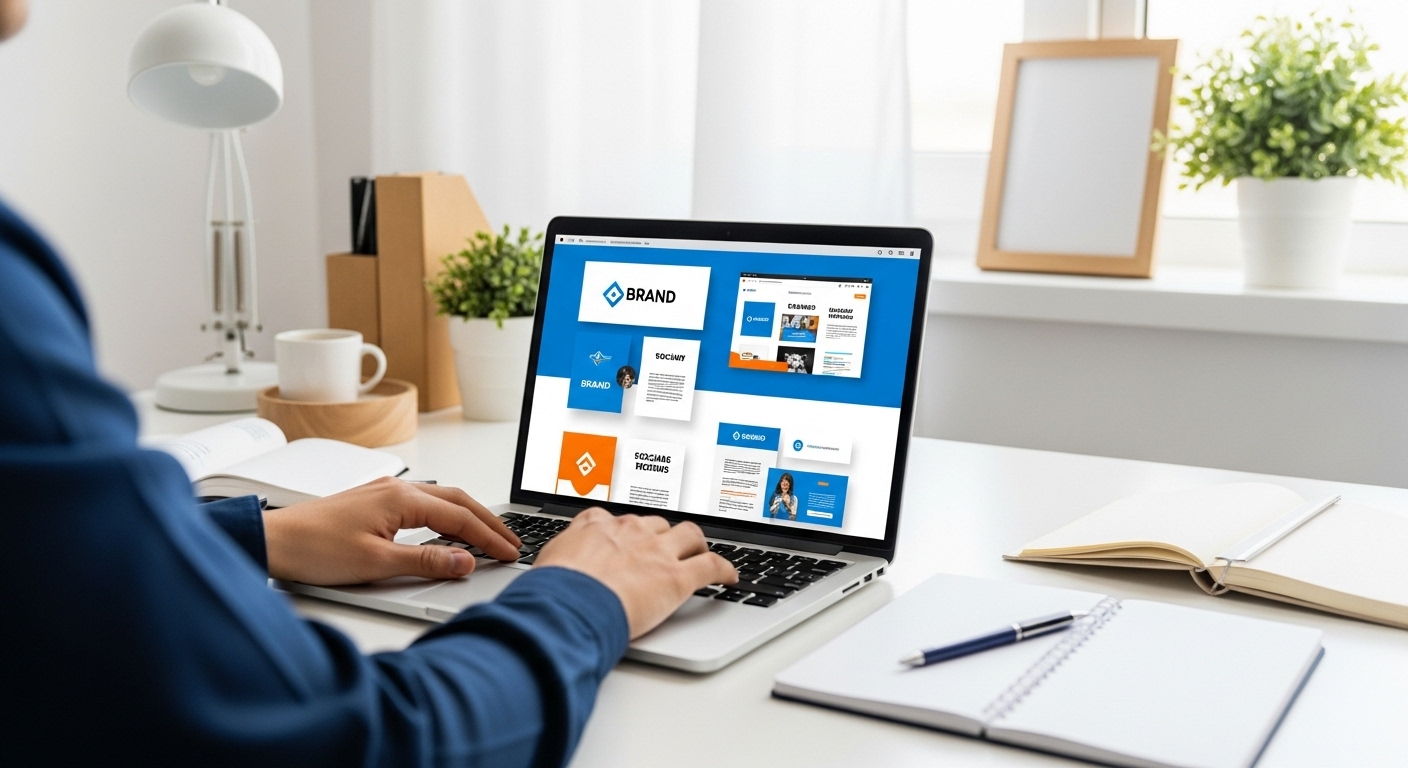Zoom into success with design that delivers! Exceptional design is not just eye candy- it’s the catalyst for engagement, conversion, and loyalty.
However, how can you know your design really resonates? Understanding the methodology of how to measure the effectiveness of great design is the first step to unlocking it.
This thorough guide contains actionable metrics, tools and expert advice to test the value of design and your business. Ready to prove the value of your design? Let’s do this!
TL;DR
- Measure Engagement: Record user click data, page time, social shares, etc.
- Analyze Conversions: Monitor sales, sign ups, or leads as impacted by design.
- Gather Feedback: Utilize surveys and user testing to find out how the audience felt.
- Assess Brand Metrics: Assess measures of recognition and loyalty from your design.
- Track ROI: Report on cost of design compared to revenue or levels of engagement gained.
- Ensure Consistency: Perform an audit on the use of the design in channels in order to evaluate the impact of consistent design.
Why Measuring Design Impact Matters
Great design from logos to websites to product packaging helps customers and clients build trust, define interaction, and then establish meaning with your brand.
But without data, you could just be estimating what it’s worth. Knowing how to measure the impact of great design assists organizations validate investments, adjust strategy, and correlate design processes with organizational goals.
Understanding the return on investment for design is increasingly significant for small or growing businesses and newly formed enterprises to remain competitive in the marketplace.
Key advantages to measuring design impact are
- Justifying Budget: Show stakeholders how design contributes to your bottom-line.
- Optimizing User Experience: Understand what’s effective and what may need a tweak.
- Supporting Brand Identity: Confirm the design meets the brand’s narrative and aspirations.
In today’s marketplace, organizations of all sizes are faced with the challenge of designing for business; therefore, developing context to measure the impact of design can help solidify creative purposes as measurable business practice.
Key Metrics for Measuring Design Impact
To appreciate how to gauge the effect of great design, consider simple measures:
1. User Engagement
Engagement metrics show how your users are interacting with your design.
- Time on Page: Users spend longer on pages that offer great visuals or intuitive layouts.
- Click Through Rates (CTR): The higher CTRs may relate to design elements or simply effective calls to action.
- Social Shares: Shares on platforms like X, or Instagram for example, represent ascertained resonance of your design.
- Bounce Rate: Bounce rates lower at times are often linked to a user-friendly, engaging design.
Example: After a recent redesigned website was launched, we noticed there was a 20% increase in time spent on the page. This is a healthy indication that the users are more engaged with the design.
2. Conversion Rates
Conversions sales, sign-ups, or downloads are the ultimate proof of design’s impact. Measure:
- Conversion Rate: Compare before and after a redesign to see uplift.
- Funnel Progression: Analyze how design guides users through sales or sign-up funnels.
- A/B Testing: Test design variations to identify which drives more conversions.
Example: A new landing page design that boosts sign-ups by 15% demonstrates measurable impact.
3. User Feedback
Direct feedback provides qualitative insights into how to measure the impact of great design. Use:
- Surveys: Ask users how the design affects their experience.
- User Testing: Observe how real users navigate your design.
- Reviews and Comments: Monitor feedback on platforms like X for sentiment.
Example: Positive survey responses about a new logo’s clarity show its effectiveness.
4. Brand Recognition and Loyalty
Great design strengthens brand identity. Measure
- Brand Recall: Survey customers to see if they recognize your logo or visuals.
- Net Promoter Score (NPS): Gauge if design improvements boost customer loyalty.
- Social Media Mentions: Track mentions of your brand’s visuals on platforms like X.
Example: A 30% increase in brand-related searches after a logo redesign signals stronger recognition.
5. Return on Investment (ROI)
Calculate design’s financial impact by comparing costs to outcomes:
- Revenue Uplift: Measure sales increases tied to a redesign.
- Cost Savings: Assess if design reduces user support queries or churn.
- Design Costs vs. Gains: Compare expenses (e.g., designer fees) to revenue or engagement gains.
Example: A $5,000 website redesign that generates $50,000 in new sales yields a clear ROI.
6. Design Consistency
Consistent design across channels enhances impact. Audit:
- Usage Across Platforms: Ensure logos, colors, and fonts are uniform.
- Style Guide Adherence: Check if teams follow brand guidelines.
- Visual Cohesion: Confirm design elements align across web, print, and social.
Example: A consistent logo across social media and packaging boosts brand trust.
The Process for Measuring Design Impact
To master how to measure the impact of great design, follow this structured process:
Step 1: Set Clear Goals
Define what success looks like- e.g., 10% more conversions, 20% higher engagement, or improved NPS. Align goals with business objectives.
Step 2: Choose Relevant Metrics
Select metrics from the list above based on your goals. For example, focus on conversions for e-commerce or brand recall for new businesses.
Step 3: Collect Baseline Data
Before implementing a new design, gather baseline metrics (e.g., current CTR, bounce rate, or sales). This sets a benchmark for comparison.
Step 4: Implement and Track
Launch the new design and monitor metrics using tools like Google Analytics, Hotjar, or social media insights. Track over weeks or months for reliable data.
Step 5: Analyze and Optimize
Compare post-design metrics to baselines. Identify trends, successes, or areas for improvement. Use insights to refine future designs.
Step 6: Report to Stakeholders
Present findings to your team or clients, highlighting ROI and key wins. Use visuals like charts to make data compelling.
Tools for Measuring Design Impact
Leverage these tools to simplify how to measure the impact of great design:
- Google Analytics: Tracks website engagement and conversions.
- Hotjar: Provides heatmaps and user behavior insights.
- SurveyMonkey: Collects user feedback via surveys.
- Brand24: Monitors brand mentions and sentiment on social platforms.
- Looker Studio: Visualizes data for stakeholder reports.
For qualitative insights, platforms like X can reveal real-time user reactions to your design.
Common Mistakes to Avoid
Even seasoned professionals can stumble when measuring how to measure the impact of great design. Avoid these pitfalls:
- Focusing Only on Aesthetics: Great design must drive measurable outcomes, not just look good.
- Ignoring Qualitative Data: Numbers alone don’t tell the full story, user feedback is key.
- Skipping Baselines: Without pre-design data, you can’t measure improvement.
- Overlooking Long-Term Impact: Some benefits, like brand loyalty, take time to show.
- Inconsistent Tracking: Use consistent tools and timeframes for accurate comparisons.
Case Studies: Design Impact in Action
- E-commerce Redesign: A company that sold products online had previously made a significant investment in the user interface of its website.
- Their new website design unitized a consistent flow, improved visualizations, and better navigation.
Result: 25% of new visitors converted on the website. And users spent 30% more time on the page.
- Logo Refresh: A small business updated their outdated logo. Their brand mentions grew by 40% on X and customer’s perceived trust improved when the logo was introduced in 2023.
- App UI Overhaul: A mobile app simplified their user interface with an entirely new design and took the guesswork out for users. The app was better communicated with its users.
Result: 15% reduction in user drop-off and more five-star reviews.
As you can see from these updates in the examples above, when you measure the impact of great design you know for sure, you’re getting tangible results.
Conclusion
Great design is impactful, but the true power of design can only be realized when the impact can be measured.
By understanding how to measure the impact of great design, you will be able to articulate the impact it has on your engagement, conversions, brand loyalty, and ROI. Put processes into place, track the right metrics, and leverage tools to turn design – into a strategic key asset.
Whether you run a small business or a global brand, you need to measure the impact of your design so you can realize a return on your investment.
FAQs
1. Why is it important to measure the impact of great design?
Measuring how to measure the impact of great design justifies investments, optimizes user experience, and ensures alignment with business goals, driving better ROI.
2. What metrics should I track to evaluate design impact?
3. How can small businesses measure design impact on a budget?
4. How long does it take to see design impact results?
5. Can user feedback alone measure design impact?
6. What tools are best for measuring design impact?





